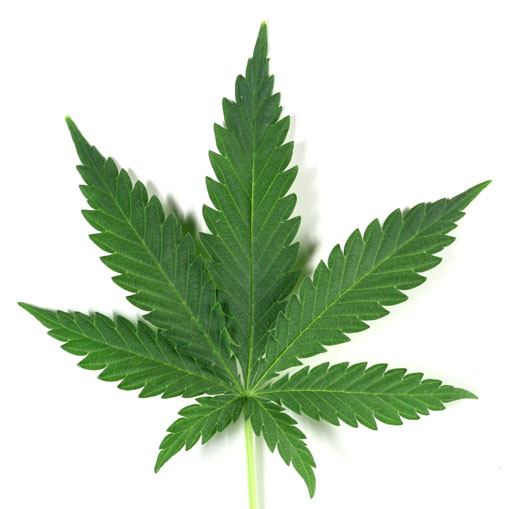
Emerald Book Review:
Smoke Signals
By Molly Cate, Cannabis Columnist
Welcome to our new cannabis book column! With so many states (and the District of Columbia) passing medical marijuana laws, decriminalizing or even legalizing the stuff, we thought to provide some guidance and information about this rapidly changing social scene. So, check in here each month for reviews, information on advocacy and counter-advocacy groups and even culinary tips. Yes, cooking with cannabis. In fact, it can be good for what ails you as ‘215 card’ holders can attest. We begin with the review of a primo book on the topic.
Winner of the 2012 Duke Award for Excellence in Botanical Literature, Smoke Signals: A Social History of Marijuana – Medical, Recreational and Scientific is by far the best book I’ve yet found on the history of cannabis in the United States. From the engaging drawl of Texas police detective Howard Woolridge traveling the USA on his horse Misty wearing a T-shirt emblazoned with the message “Cops Say Legalize Drugs. Ask Me Why,” to two-year-old brain cancer patient Cash Hyde, then the youngest cannabis patient in America, this gem of a book comprehensively brings to life all aspects of cannabis with the exception of industrial hemp, which is mentioned but not exhaustively covered. That limitation may be forgiven, since it keeps the book to about 400 pages and under $20 in cost. Throughout Smoke Signals you will find cutting edge research, gripping, poignant personal stories and heroes and villains enough to fill a megastore worth of comic books. But these heroes and villains are real.
In the first two chapters, author Martin A. Lee succinctly recounts the global history of cannabis up to the 1960s, from archaeological finds (cannabis has been an essential plant in human use for millennia) to the Beat Poets of the 1950s. I found several eye openers. Here’s a startling example: New York Mayor Fiorello La Guardia’s 1944 commission which debunked every “voodoo pharmacology” claim from Federal Bureau of Narcotics commissioner Harry Anslinger, a man who was not above playing the race card in his quest to demonize pot. He and newspaper owner William Randolph Hearst borrowed the Mexican nickname marijuana (Mary Jane) to link pot to those scary brown and black people leading “our” white youth down the road to ruin. They were so effective that most people still use the word rather than the plant’s botanical name, cannabis.
Chapter Three onward the pace of the book fans out like a river delta, allowing Lee to unhurriedly unfold the sorry history of fear, deception and distortion from 1960 to nearly the present day. With humor, clear writing and moral indignation, Lee chronicles the scientific, medical and recreational struggles over cannabis use. We meet heroes of the broad legalization movement such as Jack Herer, whose 1985 book The Emperor Wears No Clothes told the lost history of hemp; Dr. Tod Mikuriya, physician advocate and co-author of Prop. 215; Brownie Mary, the San Francisco elder who distributed thousands of homemade pot brownies to cancer and AIDS patients; and 90 year old World War Two vet and ‘ganja geezer’ Joe Schwartz in his SoCal retirement home.
Smoke Signals is especially strong in exploring spectacular scientific insights from research around the world, not including the U.S. where almost all cannabis research is still banned. Tetrahydrocannabinol, THC, the psychoactive component in the plant, was first isolated by Israeli chemist Raphael Mechoulam in the 1960s. Researchers in Europe and Israel continually find a great many health benefits. Most exciting have been lab and clinical studies finding that cannabis actually protects the brain from injury. Here we come back around to two-year-old Cash Hyde, mentioned above. Treatments for his malignant brain tumor were killing him. In desperation his dad started slipping a cannabis oil extract into the boy’s feeding tube without telling the doctors. Within two weeks the child was eating and playing again, to the doctors’ astonishment. Children with supposedly untreatable epilepsy also respond well to cannabis treatment, so much gentler than standard pharmaceuticals.
Of course, Smoke Signals is full of decades worth of political maneuvering too. We have President Richard Nixon to thank for the illogical and still internationally embarrassing pharmacological ranking of cannabis as Schedule I, meaning dangerous and utterly without medical benefit, right next to heroin. Even Nixon’s advisors knew this was incorrect. In fact, in 1972 Nixon’s handpicked hard-liners on the National Commission on Marihuana and Drug Abuse, the Shafer Commission, found no evidence that cannabis use caused physical or psychological harm. They recommended removing all criminal penalties for personal use. Nixon rejected the commission report entirely. Lee includes quotes from Oval Office audiotapes that make it clear Nixon was fighting a cultural and race war more than a drug war. Perhaps saddest of all and definitely most ironic was Nixon’s use of Elvis Presley as his star anti-drug spokesperson. Presley’s body was awash in dangerous psychoactive pharmaceuticals at the time, as we all found out later. Also during the Nixon era, Dr. Tod Mikuriya began his crusade for medical cannabis use and research. You’ll find Dr. Tod’s list of medical conditions effectively treated with cannabis in an appendix at the back, part of the book’s full documentation – index, notes and bibliography, even the full text of Prop. 215.
Decade by decade, Lee chronicles the targeting of cannabis and its users as representatives of a supposedly un-American mindset. Perhaps now that so many of us 1960s counterculture types are in our 60s a social and political amnesty is possible. This marvel of a book is a great contribution to that idea.




Leave a Reply